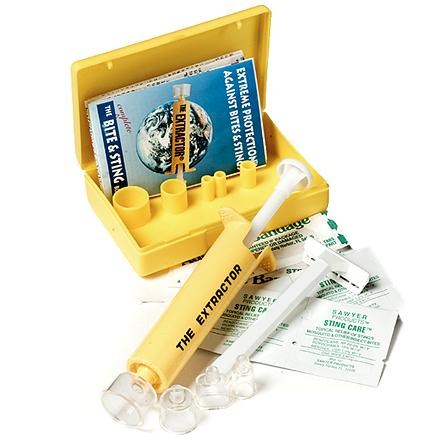As snakebite experts we are frequently asked about first aid for snakebite patients. One of the most common questions is “Do venom extractors and other commercial snakebite kits actually help?” The short answer is no. In fact, most of the advice about snakebite first aid that has circulated over the past 500 years or so (and probably much longer) is bad information. Things like pocket knives, suction devices, tourniquets, gunpowder, vitamin C, freezing, burning, and even electrocution have been advocated for snakebite first aid over the years; the only thing all of these “treatments” have in common is a high likelihood of making the situation worse.
Our physicians and snakebite researchers have seen the devastating impacts of bad snakebite first aid on patient outcomes, so you could safely say that this is an issue we are passionate about. We have seen children who died after critical hours were wasted on ineffective treatments, amputations due to the use of tourniquets or other constricting bands, disfigurement due to complications of local healers, and much more. Tragically, most of these patients could have made full recoveries if they had responded differently to their snakebites. Today, we are going to focus on one item in particular because it happens to be the most heavily marketed and widely sold commercial snakebite kit on the market. The Sawyer Venom Extractor is marketed as “the only suction device proven to remove snake venom,” but as you will learn below those claims are not only misleading but potentially harmful to anyone who uses the device on a real snakebite.
The Sawyer Extractor is perhaps the best known, best marketed example of a commercial snakebite kit that is not only useless but potentially harmful.
Unfortunately the Sawyer Extractor is a perfect example of a product that is marketed on myth rather than medicine. Snakes are some of the most widely feared and misunderstood animals on the planet, and the thought of being helpless after a snakebite has led many people to place their faith in devices that promise solutions but fail to deliver. The idea that venom could be sucked out of a wound is intuitively satisfying and has been tried in all manner of formulations starting with the ancient black stone of the middle ages, a charred piece of cow bone applied to the bite wound that was first documented over 350 years ago and remains widely used today in many parts of Africa and Asia despite numerous studies that have demonstrated it to be entirely useless. However, like many things in science, just because it sounds like a good idea doesn’t mean it actually works. Modern suction devices like the Sawyer extractor are no better than their medieval predecessors, and good scientific studies have shown that these devices are incapable of removing enough venom to prevent serious systemic effects. However, they do somehow seem to increase the amount of local tissue destruction without helping to reduce those serious systemic effects, which could be fairly described as a lose-lose situation. A full-text PDF of a great publication from the Annals of Emergency Medicine detailing the clinical evidence for not using the Sawyer Extractor can be found here: Snakebite Suction Devices Don’t Remove Venom: They Just Suck. The references in that paper include most of the relevant studies on venom extractors so if you want to do some reading this is the place to start.
The scientific reasons that venom cannot be easily sucked out of a wound are multifaceted but a basic explanation is that:
(a) venom is composed of a range of different sized molecules that rapidly diffuse into various tissue compartments including the intravascular and extracellular spaces and spread away from the site of the bite. They don’t just sit in a perfect and easily accessible chamber waiting to be sucked out again. Careful examination of one of the main studies Sawyer cites as a reason to buy their product revealed that the serosanguinous fluid sucked out of the wound was only 1/10,000th the concentration of rattlesnake venom, meaning that it extracted virtually nothing at all.
(b) fangs are curved and tissues slide back and forth in the body, the combination of which leaves the venom with no open path straight back to the surface where it could be sucked out of. Interestingly, studies have found that there was more venom in fluid allowed to leak from the wound naturally than there was in samples obtained after use of the Sawyer Extractor. It seems that the Sawyer extractor not only fails to suck fluid out of the wounds but actually collapses the wound tracts near the surface by drawing the skin up into the suction cup and may actually force that venom even deeper into the tissues. Oops!
To recap, that means they might make things worse and they won’t make things better. Sawyer continues to claim that their product is the only device on the market that is proven to extract venom, but the only “studies” they use to make these claims were not actually full studies. Both of their examples are drawn from abstracts rather than actual studies, were published by the same lab, did not undergo peer-review, barely included information about study methodology (and were therefore entirely non-reproducible) and from what they did include it appears that the experiment was designed to maximize the amount of venom that could be extracted rather than to test it under realistic conditions. Since those original studies multiple independent researchers have rigorously studied, and multiple reports of injury due to the device have been published. The wilderness medicine society along with various other medical groups have come out against the use of venom extractors, and it is safe to say that this device has no place being used on actual snakebite patients regardless of how it is marketed.
Just in case you think we are being too hard on the Sawyer Extractor, there is one clever application of the device that it doesn't totally suck at...but it has nothing to do with snakebite. Apparently they can be quite handy for the removal of flesh-eating botfly larvae that can be acquired in various tropical regions of the world...see "Simple and effective field extraction of human botfly, Dermatobia hominis, using a venom extractor." For everything else they belong in the trash.
All of these things are bad for snakebites and should be avoided!
If you want to learn about good first aid for snakebites, take a look at this article we put together on what you should actually do to survive a snakebite in the backcountry for expert advice that doesn’t suck about dealing with snakebites in austere environments!
Snakebite is a global health crisis and every donation, no matter how large or small, helps us make a difference. ASF is a 501(c)(3) charitable organization and all donations are tax deductible. Thank you for your support!


